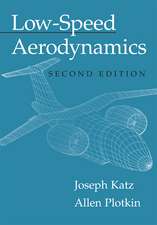An Introduction to Turbulent Flow
Autor Jean Mathieu, Julian Scotten Limba Engleză Paperback – 25 iun 2000
Preț: 644.39 lei
Preț vechi: 724.03 lei
-11% Nou
Puncte Express: 967
Preț estimativ în valută:
123.31€ • 131.85$ • 102.81£
123.31€ • 131.85$ • 102.81£
Carte tipărită la comandă
Livrare economică 18 aprilie-02 mai
Preluare comenzi: 021 569.72.76
Specificații
ISBN-13: 9780521775380
ISBN-10: 0521775388
Pagini: 386
Ilustrații: 81 b/w illus.
Dimensiuni: 178 x 254 x 20 mm
Greutate: 0.68 kg
Ediția:New.
Editura: Cambridge University Press
Colecția Cambridge University Press
Locul publicării:New York, United States
ISBN-10: 0521775388
Pagini: 386
Ilustrații: 81 b/w illus.
Dimensiuni: 178 x 254 x 20 mm
Greutate: 0.68 kg
Ediția:New.
Editura: Cambridge University Press
Colecția Cambridge University Press
Locul publicării:New York, United States
Cuprins
Preface and roadmap; General references; 1. An introduction to turbulence; 2. Statistical tools; 3. Space and time scales of turbulence; 4. Basic theory and illustrative examples; 5. Classical models of jets, wakes and boundary layers; 6. Spectral analysis of homogeneous turbulence; 7. Kolmogorov's and other theories based on spectral analysis; 8. Numerical simulation of turbulent flows.
Recenzii
'… chapters are well balanced and self-contained and the reader is naturally guided through the subject… provides a balanced introduction to the main elements of the study of turbulence in an uncluttered and literary fashion … an easily digestible introduction to turbulent flows.' Brian Briscoe, The Times Higher Education Supplement
'It takes a shrewd fluid dynamicist to avoid the subject of turbulence for long. It lies at the core of so much of what we observe, from the eruption of solar flares to reversals in the Earth's magnetic field or the vagrancies of the weather. Introduction to Turbulent Flow is a welcome attempt to bridge that vast chasm which exists between the heuristic, undergraduate accounts of turbulence and the many forbidding monographs on the subject.' P. A. Davidson, Journal of Fluid Mechanics
'… a pedagogical platform giving the tools for the study of more specialized textbooks … the book is well written and covers most of the current research topics in turbulence … This reviewer certainly recommends the purchase of Introduction to Turbulent Flow to all the libraries as a very nice complement to the existing texts … this book provides a solid background for the comprehension of more specific text and papers, therefore it can well complete the collection of personal fluid dynamics books.' R. Verzicco, Applied Mechanical Review
'The character of a book is determined at least partly by the care with which the material is presented, and this one amply demonstrates the care that the authors have invested … the authors have succeeded in the task they set out to do, and I recommend the book to all students of turbulence, no matter what their persuasion.' Katepalli R. Sreenivasan, Physics Today
'… this inspired and first-rate book will establish itself as the most convenient and outstandingly useful basic study material eagerly sought by students of turbulence … In short, you will seldom have an opportunity to have a better balanced introduction to the main elements of the study of turbulence. Indeed a book of exceptional merit.' Current Engineering Practice
'It takes a shrewd fluid dynamicist to avoid the subject of turbulence for long. It lies at the core of so much of what we observe, from the eruption of solar flares to reversals in the Earth's magnetic field or the vagrancies of the weather. Introduction to Turbulent Flow is a welcome attempt to bridge that vast chasm which exists between the heuristic, undergraduate accounts of turbulence and the many forbidding monographs on the subject.' P. A. Davidson, Journal of Fluid Mechanics
'… a pedagogical platform giving the tools for the study of more specialized textbooks … the book is well written and covers most of the current research topics in turbulence … This reviewer certainly recommends the purchase of Introduction to Turbulent Flow to all the libraries as a very nice complement to the existing texts … this book provides a solid background for the comprehension of more specific text and papers, therefore it can well complete the collection of personal fluid dynamics books.' R. Verzicco, Applied Mechanical Review
'The character of a book is determined at least partly by the care with which the material is presented, and this one amply demonstrates the care that the authors have invested … the authors have succeeded in the task they set out to do, and I recommend the book to all students of turbulence, no matter what their persuasion.' Katepalli R. Sreenivasan, Physics Today
'… this inspired and first-rate book will establish itself as the most convenient and outstandingly useful basic study material eagerly sought by students of turbulence … In short, you will seldom have an opportunity to have a better balanced introduction to the main elements of the study of turbulence. Indeed a book of exceptional merit.' Current Engineering Practice
Descriere
First published in 2000, this book provides the physical and mathematical framework necessary to understand turbulent flow.












